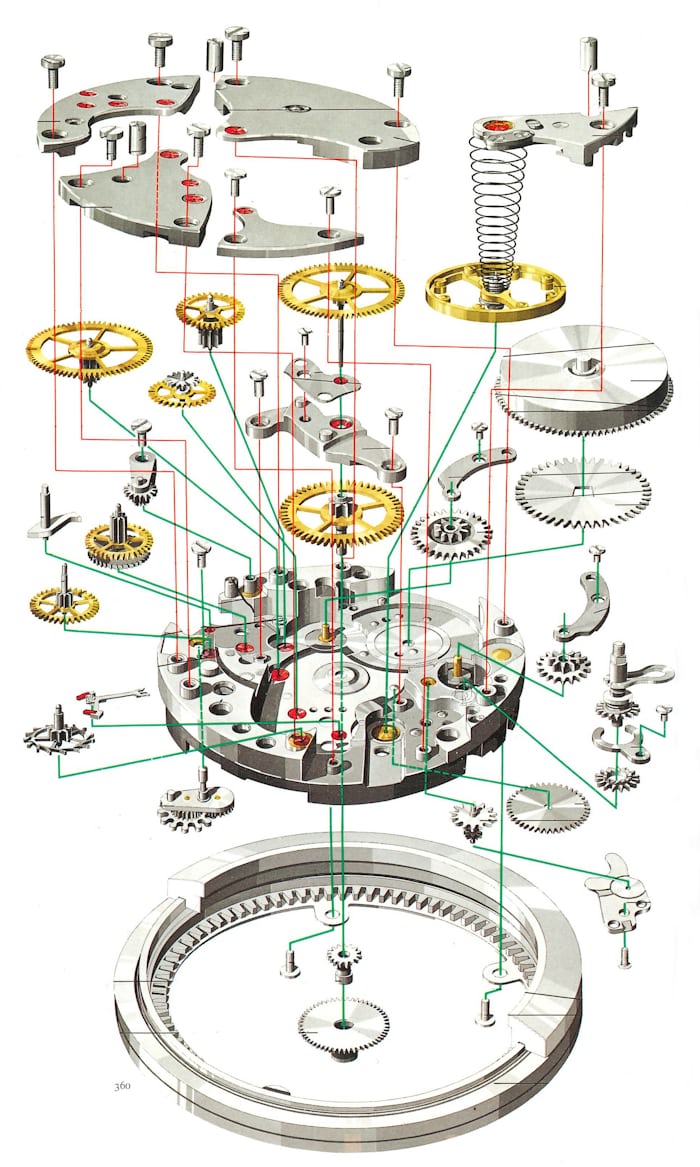Monday, May 30, 2011
Patek 3445 white gold with date

- Posted using BlogPress from my iPad
https://vintage-watch.blogspot.com/ https://www.facebook.com/groups/179047132263233/ https://www.instagram.com/maxbliss888_francis_phua/?hl=zh-cn





Wednesday, May 11, 2011












Patek Philippe ref. 3580A (Courtesy John Reardon / Collectability)

Back of Patek Philippe ref. 3580A (Courtesy John Reardon / Collectability)

Patek Philippe ref. 3563. (Credit: Sotheby's)
https://www.bobswatches.com/rolex-blog/watch-review/spotlight-patek-philippe-calatrava-3919.html
As an ordinary working man, I do not think I will have much opportunity to wear diamonds jewelry. As such, one of the way I can get to wear it subtlety is to get a watch with some small diamonds on its dial. Earlier on, I have tried the Elgin and the Rolex Datjust with diamonds and I am comfortable wearing them. The Rolex white no-lume diamond Rolex Day-Date 1803 seems like another good option. It has 8 diamond hour markers, baguette diamonds at 6 & 9 o’clock and day & date display at 12 & 3 o’clock with no luminous dotes or luminous on hands.
Some history. In 1956, the Oyster Perpetual Day-Date made its debut. Available only in 18 ct gold or platinum, it was the first wristwatch to display the date and day of the week spelt out in full in a window on the dial. With the President bracelet, originally created specially for it, the Day-Date continues to be the watch par excellence of influential people.
The white gold watch looks like stainless steel and it will be subtle enough to wear it for work. Several years ago, I was looking at one white gold 1803 but didn’t manage to get it. Finally i a, able to find one using two Datejust. The watch is probably one of the last batch from 1978.
Will look for a nice lizard skin leather strap for it. This is my second Day Date with the first one being Yellow Gold found in Bangkok when I was working there. I shall need to find a Rose gold Day Date..
網上資料 (kwsiu):歷史背景
1958年,繼 Ref. 6511 (c. 1956) 後,勞力士推出日誌型的第三代演進型號: 1803蠔式型錶款,裝載Cal. 1555機芯,具有星期及日期顯示(Day-Date),為當時的製錶界提供了一個新的思考方向,因為在當時即便其它高級品牌如百達翡麗、愛彼等,都尚未有這樣的錶款推出,也是同年代唯一可顯示全英文星期字顆的錶款,足見勞力士這款錶的重要性。
1803 維持了約 18 年的生產時間 (1960-1978),往後被 Ref. 180xx 型號於 1978 年所取代。 盡管如此,現今的日誌型亦繼承了始於1803 所獨有的高貴典雅,而又具非凡霸氣的 “總統” 形象,一直延續至今天。
I have just found a Vintage Mido Multifort Datometer With bumper automatic movement. It shall require a thorough cleaning and service. The ...
